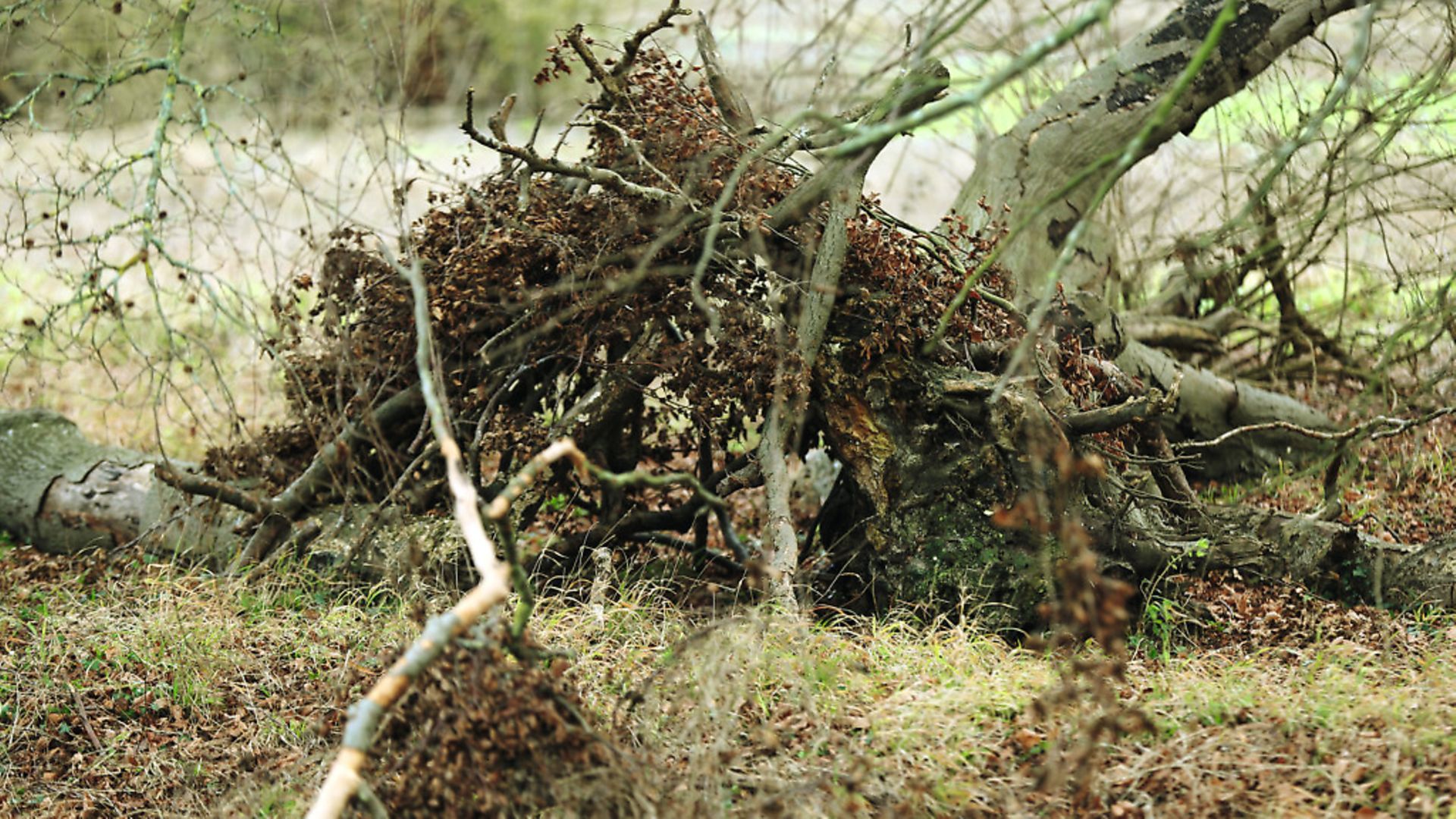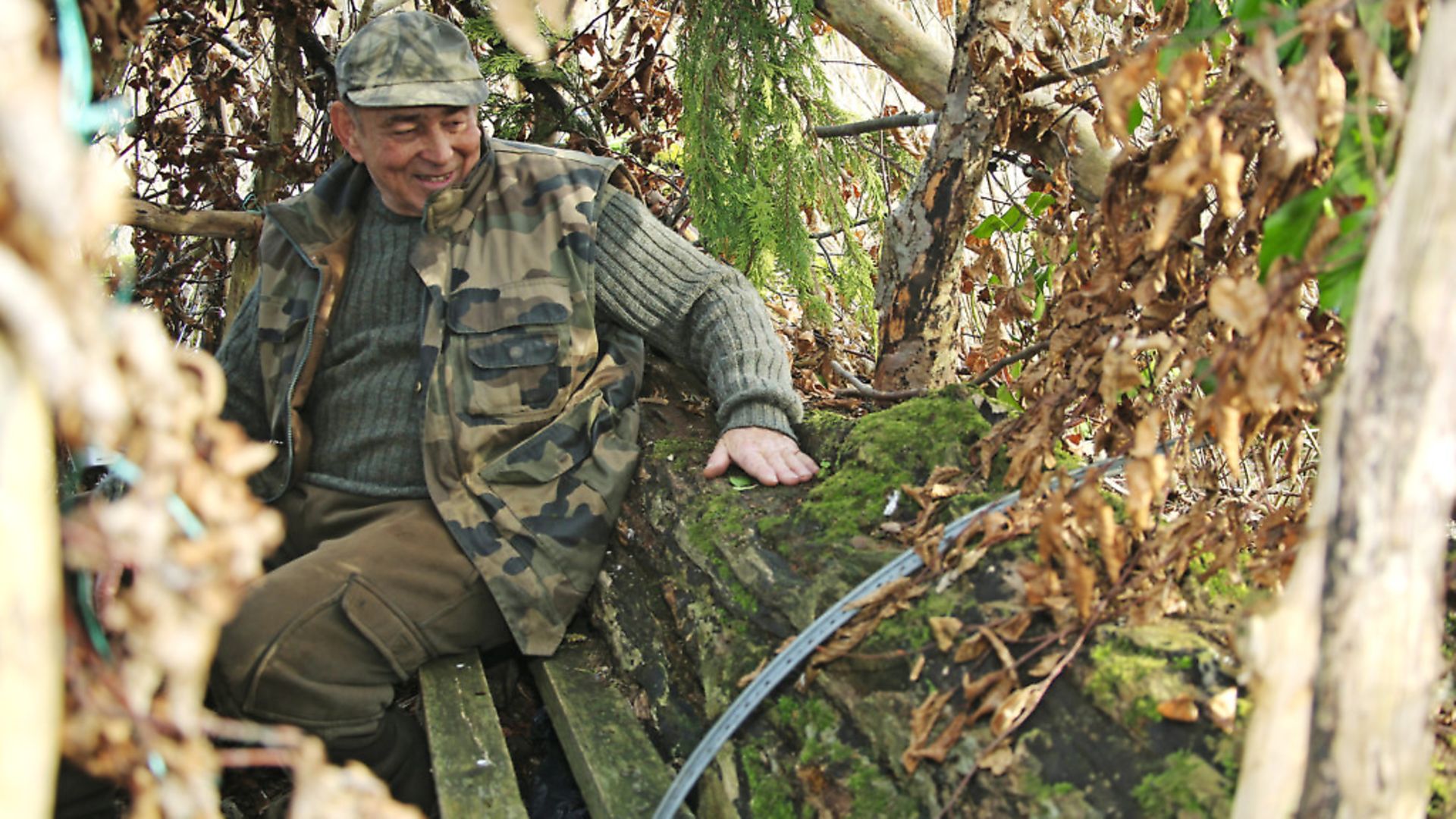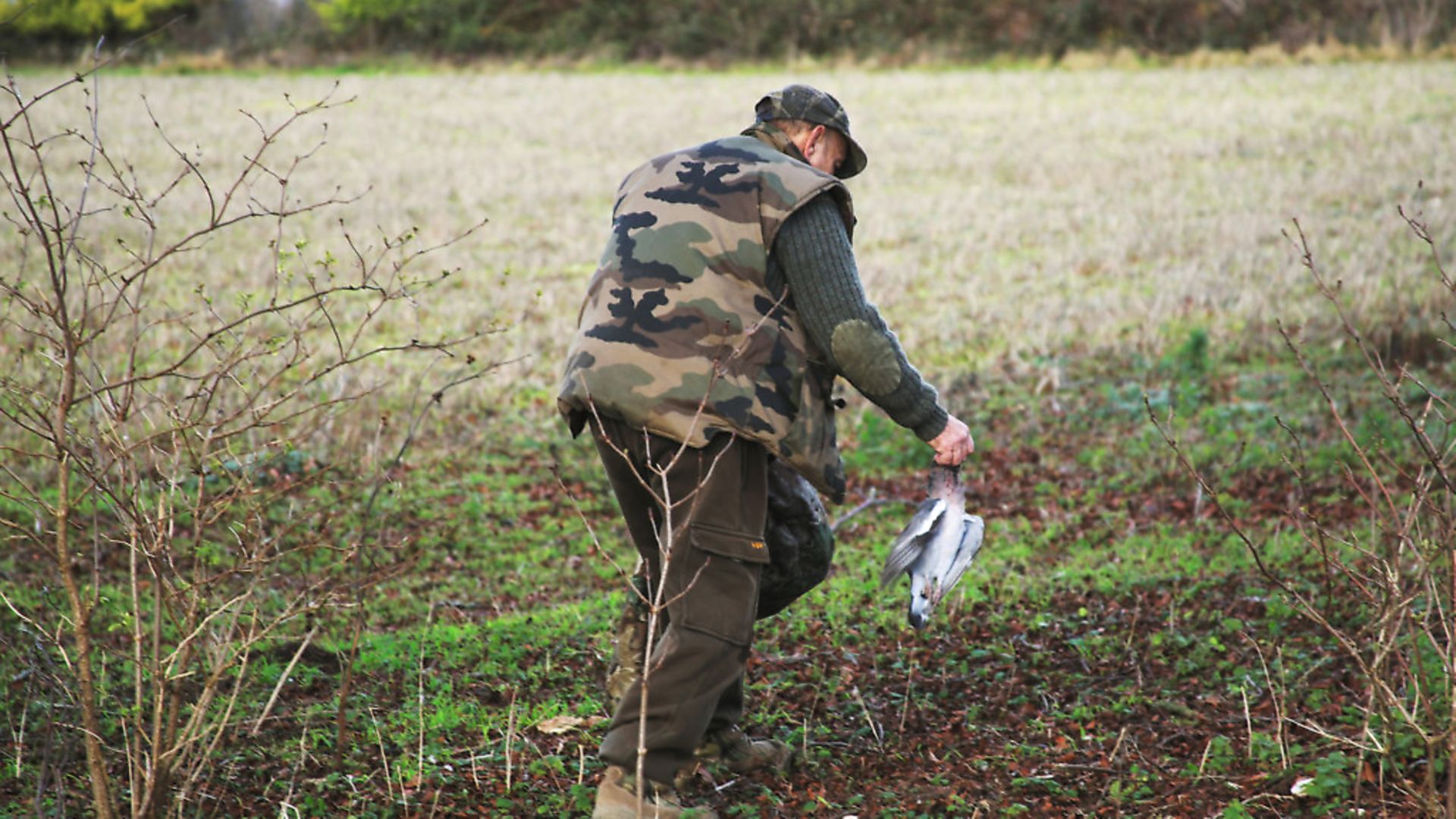The editor picks the brain of hide-hunting master, Barry Hearn
 credit: Archant
credit: Archant
I recently had the privilege of interviewing a personal hunting hero of mine, Barry Hearn. Barry used to be a regular in this magazine some years back and I was absolutely overjoyed when he agreed to do a two-part masterclass for us earlier this year. Since then, I've been itching to ask Barry all sorts of questions about hide-shooting, most of which I've been asked by the readers. He's a seriously busy man, but finally, I pinned Barry down for long enough to put those questions to him.
DB: Thanks for agreeing to do this, Barry, and I'll get straight into it if I may. First question; how much gear do you take for a full day's hide shooting?
BH: My pleasure, Dave, and that's a really good question to start with. The short answer is, the least amount I can get away with. All I need is my cased rifle and a holdall, inside which I have some decoys and usually a few dead birds, plus a small saw, a pair of secateurs, a ball of string, a flask of tea and something to eat if I'm planning a longer session. Apart from the things I carry in my pockets - knife, spare magazines, pellets and mobile phone - that's it.
Most of my prep' work would have been done the previous day, so everything's waiting to go when I arrive. All I need to do is set out my decoys and wait for the action and if I need to change location, I can be on my way in a couple of minutes.
 credit: Archant
credit: Archant
DB: I know your entire hunting philosophy is built around making the actual shot as easy as possible, but what are the circumstances under which you wouldn't take a shot at all?
BH: Another good question, Dave, and you're right, my hunting is all about making every shot as clinical as possible, usually by getting as close as I can. However, even at ranges of 25 yards and less, I'll call off the shot if, for instance, the wind is making the bird sway around, or if the entire path of the pellet isn't sufficiently clear, or, even if something just doesn't 'feel right' about the shot. That last point is down to gut instinct and I can't remember the last time it let me down. Knowing when not to take the shot is every bit as important as getting into a position to take a perfect one.
 credit: Archant
credit: Archant
DB: Your hides are obviously built with great forethought and care, but just how camouflaged do we need to be when shooting from a hide?
BH: The amount of camouflage depends entirely on what the birds - and that's all birds, not just the ones you're targeting - are likely to see. Certainly, you'll need a light-tight backdrop behind you, so your movements don't flag you up to incoming or perching birds, and I always ensure the roof of my hide makes an efficient screen, too. The sides of the structure are usually not so critical, especially at the lower levels, but if the birds can spot you through the sides of your hide as they approach, then you'll need total coverage. Basically, it's best to overdo your cammo than underdo it.
 credit: Archant
credit: Archant
DB: You're a big fan of having several 'permanent' hides on your shoots. How long can a hide remain in one place and still be effective?
BH: I've got several hides that are still working well for me over 10 years since I built them, but that's down to several factors. First, whatever attracts bird to within range of that hide needs to still be there. It can be a source of food or water, or simply somewhere they prefer to rest, roost or digest their food that keeps those birds coming back for more, but if circumstances change, or if the birds are shot too heavily in a particular location, they'll abandon it.
DB: How would you describe the perfect hide situation?
BH: Oh, that one's really easy, Dave, and I'm lucky enough to have several of those on my permissions. A perfect hide is one which is totally accepted by the local wildlife, it's covered with plenty of growing foliage, it's comfortable to use, and of course it offers plenty of opportunities to put birds in the bag. If you find yourself with access to such a hide, do all you can to 'work' it perfectly, rather than hammering the birds at every opportunity.
 credit: Archant
credit: Archant
DB: Does a hide have to blend in to be effective?
BH: Absolutely not. I use hides that are real 'carbuncles' on the landscape, but they still work, mainly because I've given the birds time to get used to them. If there are fallen branches nearby, another pile will likely be accepted, and the same goes for ivy, nettles, old man's beard, or anything else that's part of the surroundings. If these are used properly, even a 'carbuncle' can become an effective hide.
 credit: Archant
credit: Archant
DB: We all make mistakes, but have you ever made any glaring errors when hide hunting?
BH: Way too many to count, especially in my younger days. Actually, I made a major mistake only last year, when I started to build a hide to shoot squirrels in an extremely promising location, based on the amount of bark stripping I saw. I'd almost finished the hide and I was in it at first light to decide where to put a couple of feeding stations, when a herd of deer strolled up and began stripping the very same bark, proving it wasn't squirrels at all! We're all still learning, Dave!
DB: One of our readers tells me he has a dodgy back. Can he still enjoy hide shooting?
BH: My back plays up at times, Dave, and I always try to prevent that by making the hides I use most as 'spine friendly' as I can. I set up shooting benches, with backrests, and even a shelf for my tea cup and pellets. I make sure I'm sitting at the right height, without needing to twist awkwardly to take shots. A friend of mine is on crutches and he goes hide shooting a couple of times a week, so if you cater for your back, you can definitely go hide shooting.
DB: I know you like to use shot birds as decoys, but do you set up birds you've just shot, or is it best to get back in the hide as soon as possible?
BH: Using a twig, I can have a freshly-shot bird set up in seconds, and I'd rather do that than grab the bird and dive straight back in the hide. I always keep a few suitable twigs in the hide, ready for when I need them.
DB: How do you decide on how best to set out a decoy pattern?
BH: Apart from noting the direction of the wind and making sure the decoys are facing roughly into it, never with the breeze behind them, I scatter my deeks fairly randomly around the feed source. Obviously, the decoy pattern needs to be visible to birds overhead, so don't set it out under dense cover where it can't be spotted. Basic stuff, really, with no need for anything complicated.
DB: What would you consider to be a good day's hide shooting?
BH: First, it's not about numbers, that's for sure. I've had great days in the hide, when I've shot nothing, but I've seen all sorts of wildlife, learned a load of useful things for future trips, and sometimes I've just just relaxed for an hour or two. The success of any hunting trip is personal to us all, but I always put quality before quantity.
DB: You're a confirmed Daystate fan, but how important is the hardware?
BH: It's absolutely vital for me to know that what I use in the hunting field is totally reliable, because it lets me concentrate on what I need to do. Taking each shot needs to be as clinical as possible, and I know that every pellet will land exactly where I need it to. Whatever you use, just make sure you have total confidence in it, and that applies to every part of your gear, from pellets, through mounts, scope and the rifle itself.
DB: Finally, Barry, what do you do with all those pigeons?
BH: I never waste a single one. Every bird is plucked, drawn and prepared before freezing. My family and friends love pigeon and there are so many recipes for the meat. I also have my share of pheasant, duck, venison, and other wild game, but pigeon is my favourite.
DB: Thanks so much, Barry, it's been great talking to you and don't forget, there's always a space in Air Gunner when you have time to drop in again.
BH: Thanks, Dave, it's been a pleasure, and yes, if you want, I'll be back to talk about another aspect of hunting, maybe stalking, or static hunting...and the lamping season won't be long in rolling round.
See you soon!